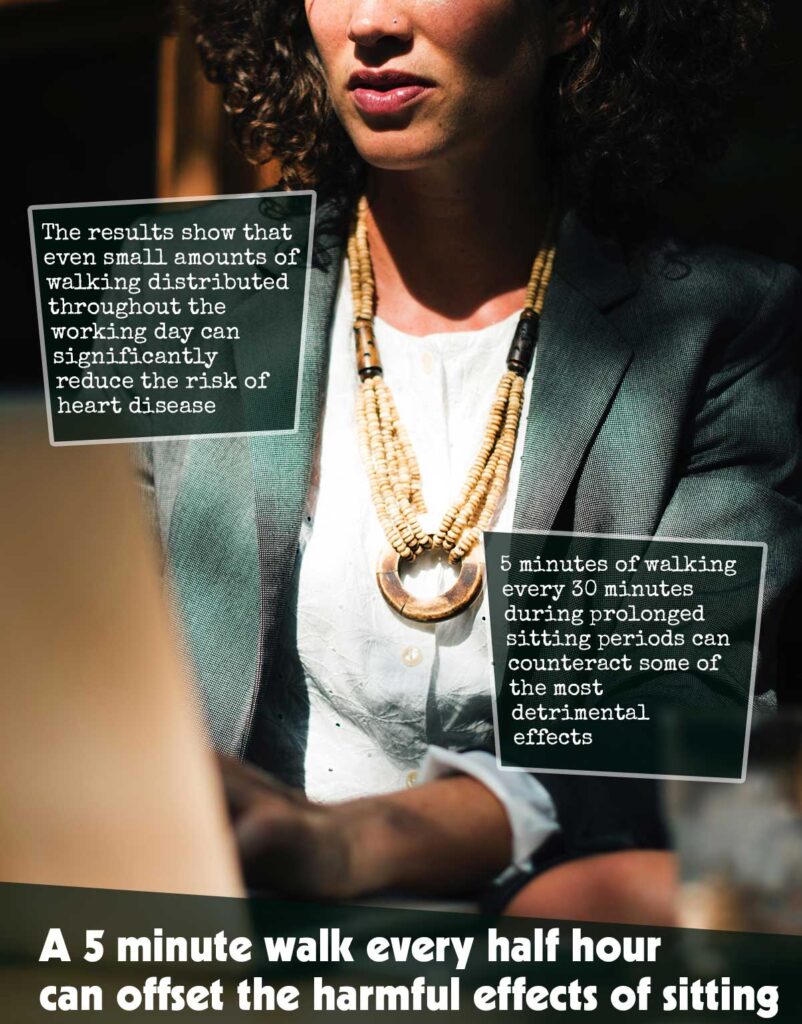Evidence continues to demonstrate the harm associated with prolonged sitting, even when engaging in regular physical exercise. Therefore, health professionals recommend all individuals sit less and move more.
But, exactly how often and for how long should we get up and move? What’s the minimum activity level needed to counteract the health impacts associated with sitting all day at work?
Exercise physiologists have undertaken an ingenious study which suggests an effective solution: five minutes of walking every 30 minutes can counteract some of the most damaging effects associated with prolonged sitting periods and increase general wellbeing.
Contrary to other research that tested one or two exercise options, this study tested five distinct activities. They include 1 minute of walking after every half an hour spent sitting and 1 minute after an hour; 5 minutes every half hour and five every hour; as well as no walking at all.
Each of the eleven participants in the study visited the laboratory where they sat in an ergonomic chair for 8 hours – only getting up for bathroom breaks or exercising on a treadmill walking machine.
Researchers closely monitored each participant to make sure they did not over- or under-exercise, with important cardiovascular health indicators like blood sugar and blood pressure being regularly evaluated. Standard meals were provided, allowing individuals to read books or laptop documents during sessions as well as use phones and take calls when possible.
Researchers found the optimal movement amount was 5 minutes of walking every half an hour; this routine successfully reduced both blood pressure and blood sugar. Furthermore, this walking routine had a profound impact on how individuals responded to large meals – significantly decreasing spikes by 58% in comparison with sitting all day.
An intermittent 1-minute walk break every half-hour was found to bring small benefits for blood sugar levels throughout the day, while taking one or five minute walks once an hour yielded no benefits at all.
Walking reduced blood pressure significantly by 4 to 5 mmHg when compared with sitting all day, or equivalently the expected reduction after 6 months of regular physical exercise.
Cognitive performance, fatigue and mood levels were continually assessed throughout testing. All walking routines other than one minute every 60 minutes resulted in significant decreases in fatigue levels and improvements to mood; none influenced cognition in any way.
Effects on fatigue and mood are significant. People often engage in activities which make them feel good, such as repeating behavior that makes them happy.
Individuals in this study were aged 40s, 50s and 60s; most did not suffer from hypertension or diabetes.
Results indicate that even small amounts of walking during workday can significantly lower heart disease risks as well as other chronic illnesses.




